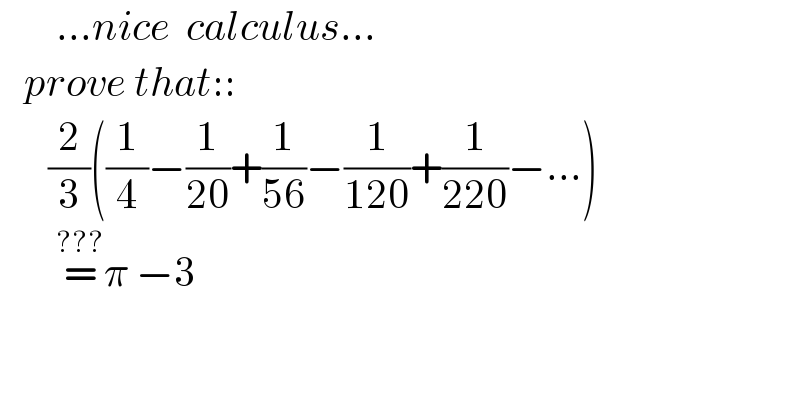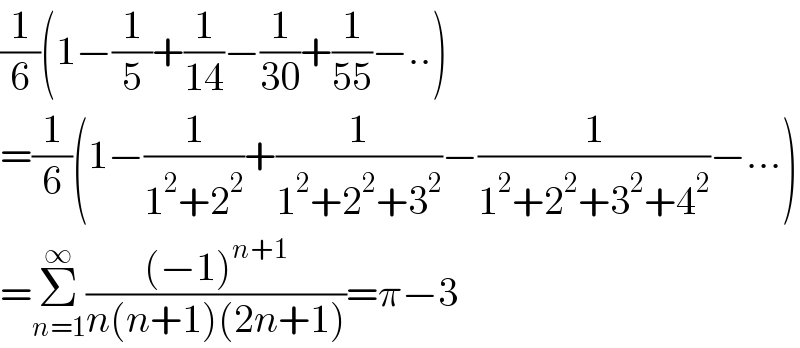
Question and Answers Forum
Question Number 129084 by mnjuly1970 last updated on 12/Jan/21

Answered by Dwaipayan Shikari last updated on 12/Jan/21

Commented by mnjuly1970 last updated on 12/Jan/21

| ||
Question and Answers Forum | ||
Question Number 129084 by mnjuly1970 last updated on 12/Jan/21 | ||
 | ||
Answered by Dwaipayan Shikari last updated on 12/Jan/21 | ||
 | ||
| ||
Commented by mnjuly1970 last updated on 12/Jan/21 | ||
 | ||